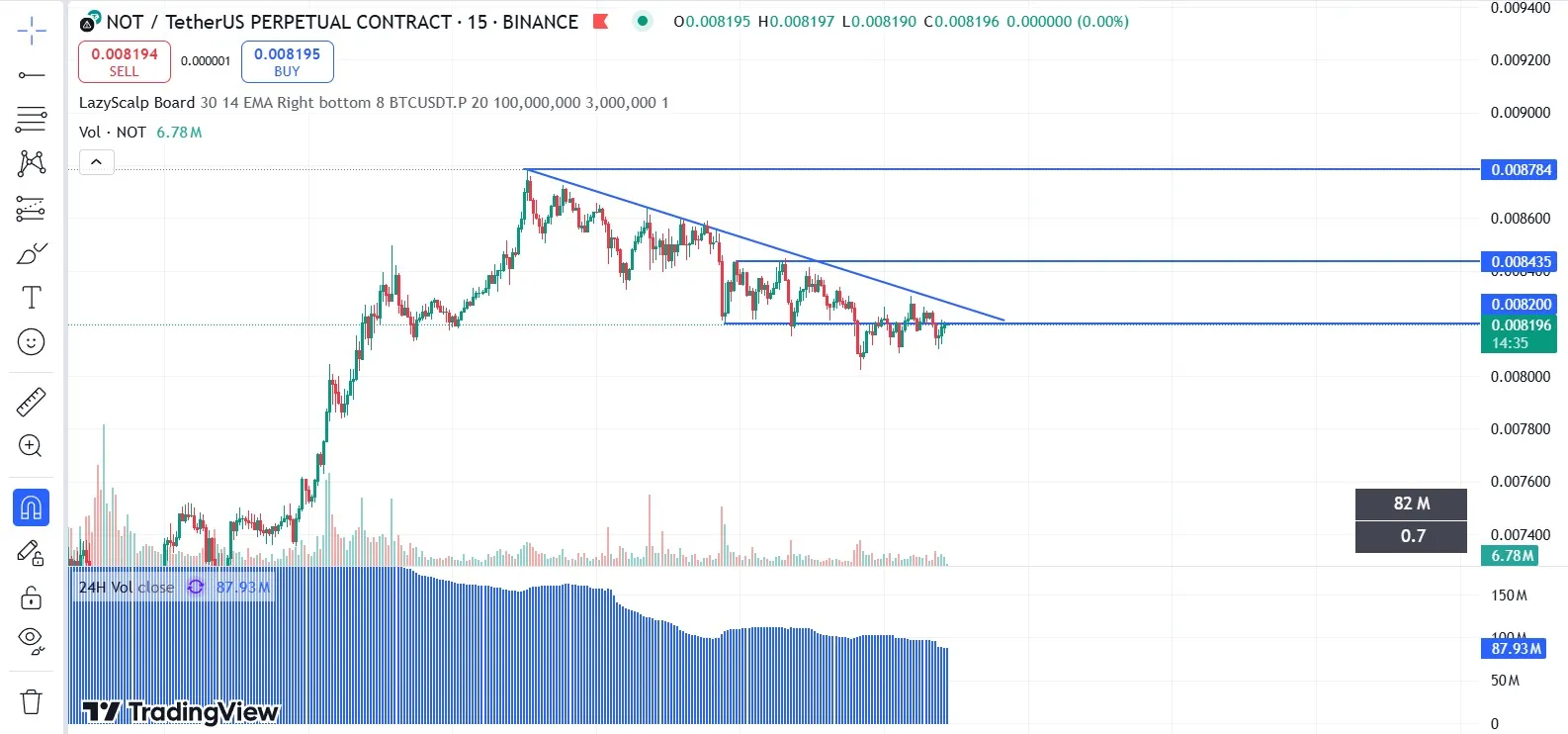
Trading - what is it and how to make money on it

Trading is one of the most popular forms of earning money on financial markets, which attracts people due to its accessibility and potentially high profitability. This type of activity is connected with buying and selling assets, the purpose of which is to gain profit due to changes in their value. The basis in trading is not only the ability to analyze the market, but also to make balanced decisions, to observe risk management and to be psychologically stable.
Trading - what it is
Trading is a type of activity on financial markets, which is based on buying and selling financial instruments in order to make profit. The main idea of trading is to use price fluctuations in the market. A trader’s earnings depend on his ability to correctly predict the direction of price movements and make timely transactions. Trading can be done on various financial markets, including stock exchanges, foreign exchange (Forex), cryptocurrency platforms and commodity exchanges. Thanks to modern technology, anyone with internet access can start trading using special platforms - trading terminals.
Trader and investor - what is the difference

Many people confuse trading with investing, but these are different approaches to working with financial markets. Here are the main differences:
- Goals and strategy:
-
An investor is focused on long-term capital appreciation. His goal is to buy an asset and hold it for months, years, or even decades, counting on it to grow in value.
-
A trader seeks to capitalize on short-term price fluctuations. A trader’s trades can last from a few seconds to several weeks.
- Time horizon:
-
Investors follow a long-term strategy, evaluating company fundamentals and the economic environment.
-
Traders work within a short-term framework, using technical analysis, indicators and news background to make decisions.
- Risks and Returns:
-
Investors typically accept lower levels of risk, but their returns are slow to form.
-
Traders are willing to take higher risks in an effort to generate quick profits. However, this approach requires considerable experience and discipline.
- Analysis approach:
-
Investors focus on fundamental analysis. They study company reports, financial strength, growth prospects and dividend policies.
-
Traders apply technical analysis, indicators and other tools to analyze price movements.
- Involvement:
-
For investors, trading can be passive. They make infrequent trades and don’t spend much time monitoring the market on a daily basis.
-
Traders are actively involved. They monitor the market daily and often use specialized trading platforms.
- Use of tools:
-
Investors often avoid using margin trading or complex financial instruments.
-
Traders actively use leverage, options and futures.
How to make money on trading

Trading provides an opportunity to make money both on the rise and fall of asset prices. However, success in trading requires knowledge, experience, discipline and the right approach.
The main aspects necessary to make money in trading are:
1. Choosing the right market
The first step is to identify the market in which you want to trade. Popular choices include:
-
Cryptocurrency market. High volatility creates many opportunities to make money.
-
Stock market. More stable and suitable for those who prefer to analyze large companies.
-
Foreign exchange market (Forex). Provides round-the-clock trading with a high volume of transactions.
-
Commodity markets. Excellent choice for those interested in oil, gold or agricultural products.
2. Developing a trading strategy
To successfully make money from trading, you need to follow a clear strategy. Here are some popular approaches:
-
Day Trading (Day Trading). Trades are made and closed within one day. Requires active market monitoring.
-
Scalping. Fast trading to capitalize on small price movements.
-
Swing Trading. Uses trend analysis to capitalize on medium-term price fluctuations.
-
Trend Trading. Conclusion of transactions in the direction of a long-term trend.
3. using technical and fundamental analysis

Traders use two main types of analysis:
-
Technical analysis. Examining charts for various technical patterns and using indicators (RSI, MACD, etc.).
-
Fundamental analysis. Analyzing news, company reports, economic indicators and other factors affecting the market.
4. Capital management
Money management is the key to success in trading. Basic principles include:
-
Position sizing (money management) Never risk more than 1-2% of your capital in a single trade.
-
Use of stop losses. They protect your capital from significant losses.
-
Risk management. Determine in advance how much you are willing to lose before entering a trade.
5. Leverage
Leverage allows traders to make trades for amounts greater than their deposit. For example, leverage of 1:10 allows you to manage 10 times your equity. However, this increases both potential profit and risk.
6. Trade automation
Modern technology makes it possible to automate trading with the help of bots and algorithms.
-
Veles Finance trading bots. Programs that make transactions according to predetermined parameters, without personal participation in the process both on futures and spot, bots can be created and configured by yourself or take ready-made ones.
-
Algotrading. Creation of complex algorithms for market analysis and automated trading.
7. Constant learning and analyzing mistakes
A successful trader is constantly learning:
-
Read books, articles and courses about trading.
-
Analyze all your trades to understand what worked and what didn’t.
-
Keep up to date with the news agenda and market changes.
8. Psychology of trading
Emotions of any kind can ruin a successful strategy. Important:
-
Control emotions.
-
Follow your trading plan without deviating from it because of impulsive decisions.
-
Remain disciplined in every trade.
Types and strategies of trading
The main types of trading:
-
Day Trading: trades are made within one day.
-
Swing Trading: Holding positions for a couple of days to a few weeks.
-
Scalping: A large number of trades with minimal profit on each trade.
-
Algotrading: Automating the trading process using algorithms.
Popular strategies:
-
Technical analysis: using charts and technical patterns to analyze price movements.
-
Fundamental Analysis: studying macroeconomic data and company information.
-
News trading: capitalizing on strong market movements caused by news.
Working as a trader - what it requires
In order to become a trader, you need:
1. education and knowledge
To work successfully as a trader, you need to have basic and in-depth knowledge of financial markets.
-
Economic and financial literacy. Understanding of the basics of economics, macro- and microeconomic processes.
-
Market analysis. Ability to conduct technical analysis and fundamental analysis.
-
Theory of capital management. Understanding of the principles of risk management and position calculation.
Learning can take place through courses, books, specialized online platforms and participation in trading communities.
2. technical tools
A trader’s job requires certain hardware and software:
-
A computer or laptop. A high-performance device with a reliable internet connection.
-
Two or more monitors. Multitasking allows you to monitor charts, news and trading terminals simultaneously.
-
Software. Trading platforms (MetaTrader, TradingView, NinjaTrader, etc.) where you can analyze and execute trades.
-
Fast Internet connection. Processing speed can be critical, especially for scalpers and day traders.
-
Mobile app. For monitoring and managing trades on the go.
3. broker or exchange
A trader needs an intermediary to access the financial markets:
-
Brokers. Allow you to trade stocks, currencies and derivatives. The choice depends on the terms and conditions (size of commissions, leverage, supported markets).
-
Cryptocurrency exchanges. Binance, OKX, Bybit and other platforms give access to trading on the cryptocurrency market.
It is important to choose a trusted intermediary with a reliable reputation.
4. Initial capital
To start working as a trader, you will need startup capital. Its size depends on the chosen market and strategy:
-
Forex. Some brokers allow you to start with $100 thanks to leverage.
-
Stock market. More significant capital is required, from $1,000 and more.
-
Cryptocurrencies. The minimum amount for trading can start from $10, but for real profitability you need more.
5. Personal skills and qualities
Trading requires certain personal qualities:
-
Discipline. Following the trading plan without deviations.
-
Analytical thinking. Ability to process large amounts of data and draw conclusions.
-
Psychological stability. Control over emotions (greed, fear, excitement).
-
Flexibility. Ability to adapt to changing market conditions.
-
Ability to learn. Constant development and study of new strategies and approaches.
6. Practice on demo accounts
Before trading with real money, it is important to practice:
-
Demo accounts. This is an opportunity to trade with virtual money without the risk of losing real money.
-
Practicing strategies. Applying theoretical knowledge in practice to understand what works and what doesn’t.
-
Backtests. These tools allow you to test trading strategies. Backtests Veles will help to reduce potential risks and save time.
7. Developing a trading plan
Every trader needs to have a clear trading plan, which includes:
-
Instrument selection. Which assets will be traded.
-
Determination of strategy. Trend trading, scalping, arbitrage, etc.
-
Risk parameters. Maximum allowable risk per trade, total risk per day or week.
-
Goals. Specific profit margins and time to achieve them.
8. Support and training
It is important for a trader to keep up to date with events and trends:
-
Communities of traders. Sharing experience, participation in discussions.
-
News and analytics. Services like Bloomberg, Reuters, Cointelegraph help to track market changes.
-
Mentorship. If available, learning from an experienced trader can accelerate progress.
9. Knowledge of the law
Being a trader requires compliance with laws:
-
Taxes. A trader must declare income and pay the appropriate taxes.
-
Regulation. Knowledge of market regulations, including restrictions on leverage or participation in certain markets.
What a trader does
A trader’s main activities include:
-
Analyzing the market using technical and fundamental analysis.
-
Making trades;
-
Capital and risk management;
-
Monitoring economic and corporate news;
-
Continuous learning and improvement of trading strategies in a changing market.
Where to start in trading
-
Learn the basic concepts and terminology.
-
Choose a market to trade (stocks, Forex, cryptocurrencies, etc.).
-
Find a reliable broker.
-
Try a demo account for practicing.
-
Develop a strategy and test it in practice.
-
Start with small amounts to minimize risks.
What are the risks of trading
Trading is one of the highest risk activities. The main risks include:
-
Loss of capital: wrong trades can lead to a total loss of invested funds.
-
Psychological stress: the need to make quick decisions under pressure.
-
Market volatility: sudden price changes can nullify the deposit.
-
Leverage risks: increased leveraged trades can amplify losses.
Conclusion
Trading is not only a way to earn money, but also an opportunity to develop analytical thinking and self-discipline. However, it takes time, training and control over emotions to succeed. The market rewards those who are ready to work on themselves and constantly improve.
FAQ
1. How much can I earn from trading?
Earnings depend on capital, level of experience and strategy. It is recommended for beginners to start with small amounts and not to expect a quick income.
2. What starting capital is needed for trading?
The minimum capital depends on the chosen market. For example, you can start trading with cryptobots Veles with just 1$.
3. How long does it take to learn trading?
The average training period is from several months to a year. Practice on demo accounts will help you learn the basic skills faster.
4. Is it possible to trade without experience?
Yes, but it is recommended to get training first and start with backtests.
5. How to choose a broker/pro trading company?
Pay attention to the company’s reputation, commissions, licenses and convenience of the trading platform.